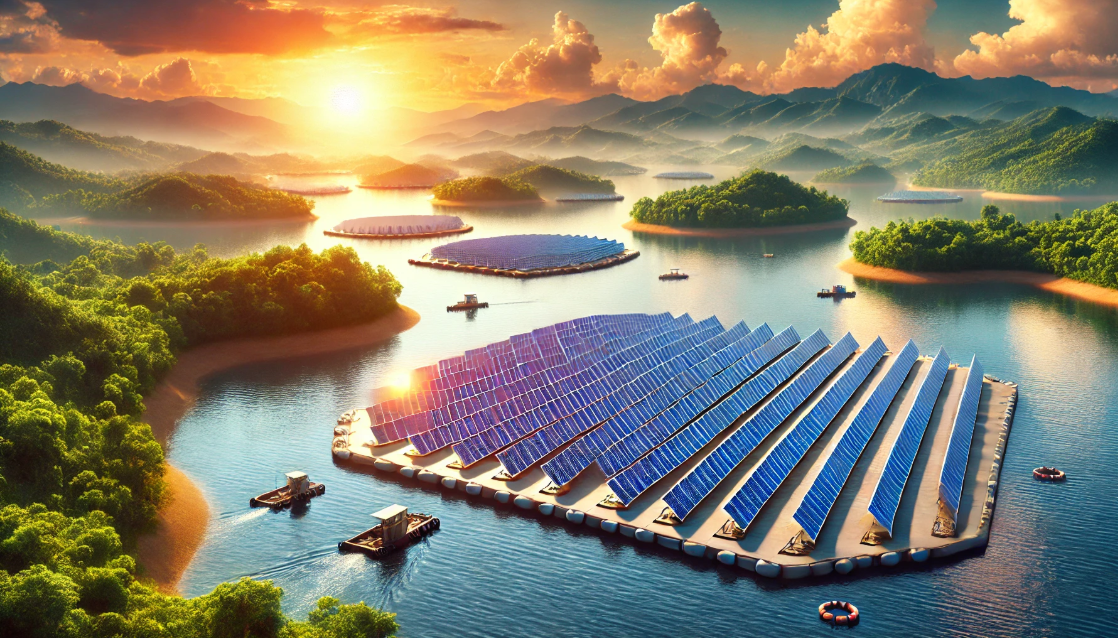Floating Solar: A Rising Star in Renewable Energy
Floating solar photovoltaic (FPV) technology is set to grow rapidly, with global installations expected to reach an impressive 77GWdc within the next decade, according to Wood Mackenzie’s latest report. This exciting technology offers innovative solutions to challenges like land scarcity and rising energy demand, making it a key player in the renewable energy sector. The Asia-Pacific (APAC) region leads the charge, accounting for a remarkable 81% of global floating solar projects. Projections indicate that APAC will continue to dominate, with nine of the top ten FPV markets and an estimated capacity of 57GWdc by 2033.
Countries like India, China, and Indonesia are at the forefront of this revolution, together boasting 31GWdc of installed FPV capacity. In 2024 alone, APAC is expected to contribute 90% of the 1.7GWdc of new FPV capacity coming online. This highlights the region’s pivotal role in addressing energy needs while reducing environmental impacts. Europe is also making strides, with Germany, France, and the Netherlands predicted to account for over 60% of the continent’s FPV capacity by 2033. Germany leads the European market, with a projected 2.2GWdc capacity, followed by France at 1.2GWdc and the Netherlands at 1GWdc. However, Europe faces growth barriers like strict coverage and distance limits, which could hinder its progress compared to APAC’s momentum.
In the United States, FPV adoption is still in its early stages, with just 0.7GWdc projected by 2033. Challenges like limited land availability and higher costs compared to traditional ground-mounted systems have slowed development. However, growing interest from renewable energy companies such as BayWa r.e., Ciel & Terre, and Sungrow is creating momentum. Cost is a critical factor for FPV growth. While FPV systems cost $0.13 to $0.15 more per watt than ground-mounted systems, the falling prices of high-efficiency solar modules like PERC and TOPCon are helping reduce overall costs. Supportive policies and the rising demand for clean energy are fueling optimism about the sector’s future.
Hybrid FPV-hydro projects, which use reservoirs to combine energy generation and storage, are also gaining traction. These projects are expected to peak between 2026 and 2028, although longer development timelines pose a challenge. Despite its potential, FPV faces hurdles such as complex approval processes and inconsistent technical standards. These issues have delayed some installations from 2024 to 2026 or later. Addressing these challenges through streamlined policies and harmonized standards will be crucial to unlocking FPV’s full potential.
Floating solar represents a unique blend of innovation and sustainability. It addresses pressing issues like land constraints while contributing significantly to renewable energy goals. With strong growth projected in APAC, Europe, and beyond, floating solar is emerging as a transformative solution for a greener future. As costs drop and technologies improve, the future of floating solar looks brighter than ever. #FloatingSolar #RenewableEnergy #SolarInnovation #CleanEnergy #Sustainability #GreenFuture #HybridEnergy #SolarPV #GlobalEnergyTrends

